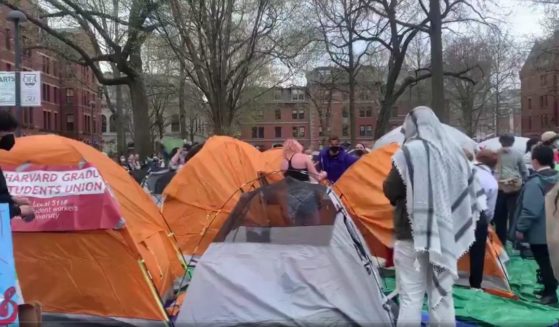Ever See a 'Bent' Tree in the Woods? Here's What It Could Be Marking
To walk in the footsteps of Native Americans, something that can sound attractive in a world of COVID-19, it helps if you have a map.
However, if you pay attention, you can spot some trail markers the Native Americans left behind.
Although the bent tree numbers are dwindling, some landmarks of a time when Native Americans roamed the woodlands of North America still exist in the form of oddly bent trees.
Now, not all trees with oddly shaped trunks are Native American trail markers, but many are if you look closely.
According to American Forests, a non-profit dedicated to the conservation of forests, some bent trees “are actually landmarks that helped guide indigenous people on their way.”
“Native Americans would bend young trees to create permanent trail markers, designating safe paths through rough country and pointing travelers toward water, food or other important landmarks,” American Forests’ blog post author Katrina Marland said.
“Over the years, the trees have grown, keeping their original shape, but with their purpose all but forgotten as modern life sprang up around them. Today, we may not need these ‘trail trees’ to navigate, but their place in history makes them invaluable.”
Trail trees can be located wherever Native Americans once roamed.
Native American Trail Trees: 5 Awesome Real-Life Easter Eggs Hidden Throughout The World – https://t.co/ekF1JuMkEh pic.twitter.com/xoSjVpR8Q0
— Cracked.com (@cracked) July 22, 2016
Trail trees are a living Native American legacy https://t.co/wvSBjTbcxg pic.twitter.com/WCtKAMZga4
— Planet Green (@PlanetGreen) March 8, 2016
Michigan is home to many trail trees that have survived time and progress, according to WWTV.
“They’re all over the state. I think they’re all over the Great Lakes really. They were used as markers for direction,” said Eric Hemenway, Director of Department of Reparation, Archives and Records for the Little Traverse Bay Band of Odawa Indians to learn more.
“They traveled extensively, they never stayed in one spot so they were always on the move. They were going to meet other tribes for trade, they were going to meet other tribes for war, they’re going to meet to settle the war for diplomacy, they’re going to exchange goods, exchange information, and also, Native people were very cognizant of their environment. They still are,” he said.
“It was a priority to maintain and balance resources so people wouldn’t stay in one spot and exhaust their resources. They would constantly be on the move to let areas replenish and go to an area where a resource was in abundance a certain time of year. So, for example, the Odawas who were up here would go south for the winter.
“When I say south I’m not saying Florida or Georgia, I’m talking Kalamazoo or northern Illinois. They would winter down there and in the spring they would come back north, make sugar and plant their crops. They did this so the soil wouldn’t be exhausted. Let the Earth replenish itself. They were the ultimate environmentalists, they were stewards.”
But they still needed to know where they were going.
“So they bent trees, and they were markers,” he added, explaining that saplings would be bent using a rope and weights. Once the required shape was attained, the tree was allowed to grow as it pleased.
Hemenway said that in northern Michigan, the bent trees led to “a place called Green Sky Hill. It’s a church and a burial for our ancestors.”
“But also, adjacent to Green Sky Hill is a circle of bent trees. In the 1800s the Odawa leaders in northern Michigan would come to this circle of bent trees to hold council. I believe the trees were built before the church, what better place than our old council grounds? The trees predate the church.”
Truth and Accuracy
We are committed to truth and accuracy in all of our journalism. Read our editorial standards.












